You probably have seen tiny white bugs that look like dust in clothes, hair, kitchen, and around plants. It is even worse when you don’t know how to identify and classify them. These tiny creatures may or may not pose severe health risks.
Types of white bugs to keep an eye on are termites, mold mites, flour mites, and grain mites since they can cause allergic reactions and respiratory issues. But it can be a daunting experience to spot and identify some of them.
I wrote this guide to help you identify these tiny white bugs on clothes and skin. I have also shared hacks to eliminate different types of white bugs in the kitchen, bathroom, bedroom, and around the houseplants.
White Bugs Overview
White bugs are annoying pests since they love infesting homes and gardens. These crawling insects come in different sizes and shapes, depending on their location.
These little white bugs that look like rice are more prevalent at the beginning of every fall season. These crawling insects can damage plants and cause severe health risks.
Spotting and identifying tiny white bugs that look like dust in the kitchen can be a daunting experience. I recommend seeking pests control services from professionals to avoid problems.
Use a magnifying lens to see the bug’s characteristics before calling upon Pests Control Company. It will help them save time to eliminate these stubborn bugs.
Below is a table showing different types of white bugs with their prominent location and elimination methods:
| Type of White Bugs | Where to Find It | How to Get Rid |
| Clothes Moth | Furniture, attic, and basement | Steam vacuuming the affected surfaces. Use hot water to kill the white moth larvae. |
| Termites | Moist wood structures and humid basement. | Use neem oil, boric acid, and diatomaceous earth. |
| Booklice or Psocids | Bathrooms and kitchens | Clean the mold and maintain humidity below 50%. |
| Grain or Flour Mites | Dry stored foods | Use a vacuum cleaner. Seal the plastic containers having flour and dry grains. |
| Mold Mites | Kitchen | Remove contaminated food and maintain low humidity. |
| Woolly Aphids | Fruit trees | Wipe the tree leaves and stems with neem oil solution. |
| Mealybugs | Houseplants | Use rubbing alcohol spray solution |
| Whiteflies | Houseplants and greenhouse crops | Use insecticidal soap spray solution |
| Dust Mites | Soft Furnishings | Steaming cleaning and regular vacuuming. |
How to Identify White Bugs
Identifying different types of tiny white bugs that look like dust can be challenging due to their close similarities. The best way to identify white bugs is by observing their behaviors, habitat, and characteristics.
Get to know if the white bug can fly, crawl, come out only at night, or look like specks of lint. It is the easiest way to identify different types of white bugs. I recommend using a magnifying lens to spot prominent features in each white bug.
Most white bugs in this article usually infest homes to cause severe health risks and damage your favorite houseplants. Use the bug picture to identify it and adopt the appropriate elimination method.
Whiteflies and wooly aphids are true bugs are insects since they belong to the Hemiptera order. The grain and dust mites usually act as bugs though they belong to the Acaridae family. But both these bugs and mites infest homes.
Different Types of White Bugs with Pictures
It can be overwhelming to eradicate white bugs that look like dust in your home. These annoying pests with white bodies are generally harmless. But some can bite to cause allergic reactions to the people living in the apartment.
The comprehensive information below will help you identify and eradicate these white bugs in your home without seeking professional pests control services. Let’s look into detail about the white bugs found in your home:
Booklice or Psocids (Psocoptera)
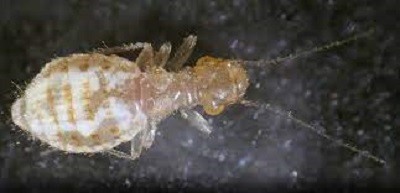
These tiny white bugs dwell in a damp location, book bindings, and stored grains. These annoying pests do not damage anything indoors though they are a nuisance.
Booklice feed on dry, starchy grains, wallpaper glue, and book bindings. These tiny winged bugs have an average size of 1-2mm long.
These white bugs are found in the bathrooms and kitchens. Keep the humidity level in these locations below 50% to disrupt their habitats.
Remember to clean the mold around these regions to avoid attracting tiny white bugs that look like dust or lint. Use also diatomaceous earth to kill the booklice and other creepy creatures.
Termites (Isoptera)
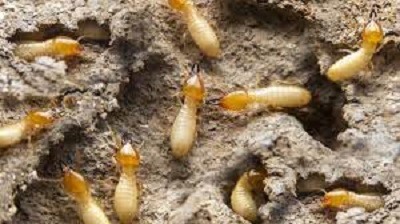
Termites have segmented white bodies with a bulbous head and six legs with an average size of 4-15mm long. But some termites have wings.
These pesky white bugs thrive in a moist environment and can damage wood structures without noticing. The tiny holes in the woods and frass in small piles are indicators of termite infestations.
Getting rid of termites from your home can be a daunting and devastating experience since they live in colonies. I recommend seeking professional help from a reputable pest control company.
Sprinkle boric acid around your home to prevent termites from absorbing nutrients and kill them in the long run. Diatomaceous earth is another alternative for eliminating termites.
Be sure to fix leaky pipes and seal cracks in your home to avoid attracting termites. Ensure the basement has a humidity level and is free from moisture.
Clothes Moth (Tineola bissellialla)
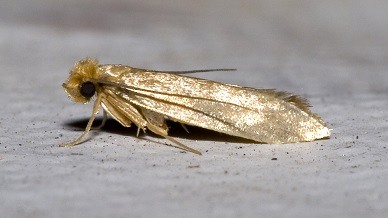
These clothes moths love a dark and undisturbed environment like attics or basement. They also prefer infesting upholstered furniture due to the hideouts.
These tiny white moths have an average size of 9-16mm with a 7mm wingspan. The gray-white wings and light-tan colored bodies make it easier to identify them.
Clothes moth can destroy silk, wool, leather, and features. The microscopic white larvae are the most destructive clothes moth.
An adult female moth lay about 200 eggs that hatch into creamy-white caterpillars. These larvae come out at night to feed on the natural fibers.
Getting rid of these tiny white bugs can be a challenging task. Wash the fabric with hot water to eliminate the eggs and the creamy-white caterpillars.
Another excellent option is to vacuum the floors and carpets more often to remove the tiny bugs from your home. Be sure to eliminate the white bug sources for permanent removal.
Dust Mites
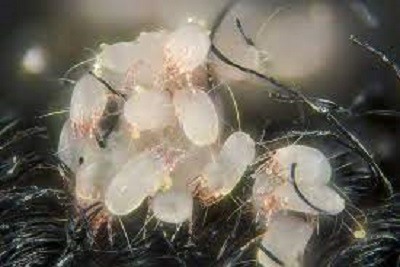
Dust mites spread fast in soft furnishings and moldy environments. The dust and moisture tend to attract these white bugs in homes.
Dust mites resemble bedbugs though they are easy to remove. But dust mites are threats to humans since they can cause respiratory diseases.
The skin and feces of these ting bugs can lead to allergies and asthma attacks. I recommend cleaning the bed, carpet, and rug to avoid dust mites infestations.
Steam cleaning is the best way to eliminate dust mites from your home. These tiny white bugs that look like dust cannot tolerate heat.
Whiteflies
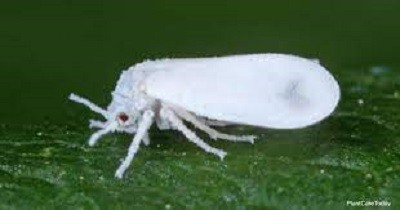
These are small flying white bugs that look like moths. These flying insects love hovering around plants at home or greenhouse.
Tiny whiteflies drain sap from houseplants and excrete a sticky honeydew substance that causes sooty mold on leaves. These substances inhibit healthy growth and spread plant diseases.
Use insecticidal soap spray to eliminate whiteflies to save your houseplants. Spray the leaves and stems more often until all the tiny flying bugs disappear.
Mealybugs (Pseudococcidae)
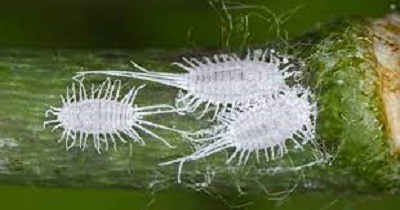
Mealybugs look like tiny white cotton bits with legs crawling on houseplants. These fuzzy white pests have three pairs of legs, small antennae, and a few waxy filaments on their bodies.
Mealybugs have a tiny white soft body with an average size of 1.3-5mm. You will notice cotton masses on your houseplant leaves and stems.
These white bugs also excrete waxy substances on the stems and beneath the leaves. These residues can weaken the plant and cause stunted growth with yellow leaves.
Use a rubbing alcohol solution to eliminate mealybugs from your houseplants. Spray the fuzzy white bugs directly to kill them on contact.
Woolly Aphids (Eriosomanthia)

Wooly aphids are sap-sucking white bugs that destroy houseplants. These tiny white bugs look like lint pieces and appear as cottony masses underneath the leaves.
The fuzzy white bug has an average size of 1-7mm long with a furry-looking body and translucent wings. Woolly aphids usually infest the fruit trees in the gardens.
Other types are white, brown, black, and green aphids. They damage plant leaves, cause leaf spots, and trigger stunted growth.
Use neem oil solution to spray the aphids directly and kill them. Perform the routine for a week until all the aphids disappear.
Mold Mites (Tyrophagus Putrescentiae)
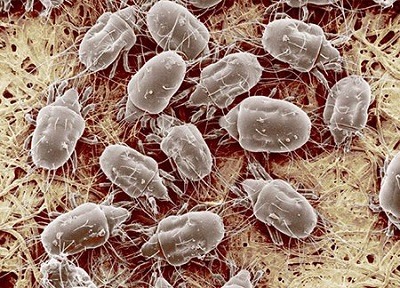
These microscopic tiny white bugs look like a fine layer of brown dust on the kitchen surface or pantry shelf when in large colonies. They have an average body size of 0.3mm long.
Mold mites are prevalent in the kitchen since they feed on seeds, grains, dried meat, cheese, and fried eggs or pet foods. They are also known as cheese eaters.
The grayish dust near the food products are signs of mold mite infestations. They can cause allergic reactions and respiratory diseases in humans.
Remove all the contaminated foods and clean the pantry shelf to eliminate the mold mites. Be sure to reduce kitchen humidity and maintain a high cleanliness level to prevent mold mites.
Grain or Flour Mites

These white bugs have a tiny gray-white oval-shaped body with clawed legs. They also have a small smooth body with an average size of 0.33-0.43mm long.
The microscopic nature makes it challenging to see them with naked eyes. A magnifying lens will help to see spiny legs and a tear-shaped body.
These kitchen pests infest the wheat flour, powdered milk, yeast, cheese, and wheat germ. Grain mites look like fine wheat flour on surfaces.
These tiny white bugs can cause an allergic reaction when they bite. They also contaminate the food and flour resulting in an unpleasant taste.
Discard the contaminated food products and vacuum clean the space to remove the tiny white bugs. Keep the grains and food products in sealable containers to prevent mite infestations.
You May Also Like:
